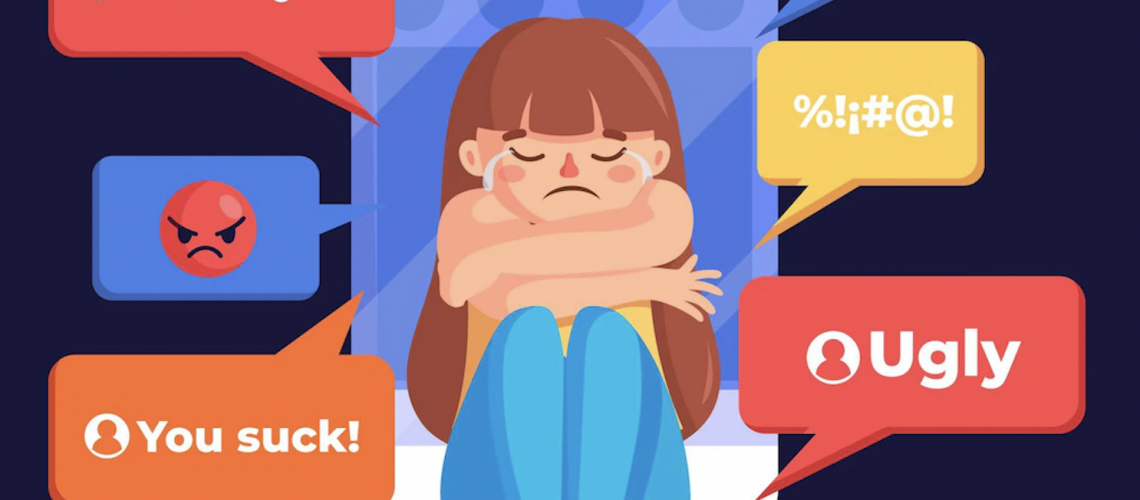Traditional practices like physically hurting, spreading false rumours, excluding certain people from your groups, teasing people in a mean way, and punching are no longer seen amongst preteens and teens.
Cyberbullying is bullying that takes place using electronic technology. It can be carried through electronic technology, which includes cell phones, computers, social media, text messages, email, chat rooms, discussion groups, and websites on the internet.
Cyberbullying is widely used for teasing, making fun of, spreading rumours online, sending unwanted messages and defamation. Bullying can happen anywhere, and it depends on the environment and socially isolated youth. Cyberbullying is more targeted at youth who are on the internet.
Cyberbullying knows no geographic, ethnic, racial, religious, social, or political boundaries, and the destructive impact it has on preteens and teens is jacked up due to the pandemic where everyone is hooked up to the internet 24*7.
Why do people Cyberbully:
It’s just not frustration, revenge, and dominance. The bully could be a competitor, disgruntled employee, ex-friend/ex-spouse, political rivalry, or even gender based violence because of its anonymity
There is an encouragement and endorsement on the internet for harmful behaviour, and this sets a dangerous norm for future perpetrators to continue inflicting harm on their victims. The Internet has changed the narrative, view points, and consumption patterns of society at large, Shaming has become an industry and the Internet has jacked.
A marketplace has emerged where public shaming is a commodity and shame is an industry. Nowadays, money is made on clicks. The more shame, the more clicks, the more the advertising revenue.
Reporting harmful online behaviour to technology companies will also help fine-tune algorithms on social media platforms to detect similar incidents, but hardly any do in spite of a feature (Report an Abuse etc.) that exists on almost all social platforms.
The right to freedom of expression and speech is a must. However, such freedom is subject to reasonable restriction. The protection of the reputation of the other person falls within the ambit of reasonable restriction and any comment or remark which hampers the reputation of another person should invite liability under the law of defamation, which is not prevalent in the majority of countries today.
What can parents do on cyberbullying:
- As a parent, you need to take onus and take a key role, prevention and stopping which is the key factor. So, the parent could do:
- Always be positive when giving feedback when they do well, in turn this builds their self-esteem.
- Give them self confidence to stand-up for what they believe in.
- Teach resolution without any violence.
- Be serious in your ownership even though he / she is single child, the child will pick up on this as you’re being positive.
- Discuss their day, the positives & negative, be open every day for few minutes.
- Don’t mock others in front of your children, negative breed’s negative outcomes
- Set time limits using Screen Time agreement (Both Smartphone and Internet).
- Set parental control on media, games & applications.
What can Institutions do on cyberbullying:
As many families have had children commit suicide due to cyberbullying, certain areas are now demanding the legal authorities to act on the issue of cyberbullying. People assume that bullies are from disadvantaged backgrounds, like having faced domestic violence, parental separations, and frayed parent child relationships. It’s not a fact, considering the world’s cyberbullying effects on youth. In the majority of the cases we have seen, the bullies are from well-to-do family backgrounds.
Bullies and bullied children can have long-term emotional effects that lead to substance abuse disorders in adulthood and suffer from mental health disorders such as anxiety and depression.Educating our children on Internet ethics and digital wellbeing is one of the key elements.
For Pre-Teens – Having a four-module course approach (a) Interaction: With whom, where, and how are they interacting?(b) Information: – Are they checking the source, verifying it and sharing it? (c) Influence: Are they influenced by the information they are gaining access to? (d) Instruction: Are they receiving or giving instruction?
For Teems – Having a three-module course approach (a) Digital Security: Tools & Techniques (b) Digital Safety: Physical & Psychological Wellbeing (c) Digital Spirit: Legal And Ethical Issues.
Reporting abuse on social platforms:
https://www.youtube.com/howyoutubeworks/policies/community-guidelines/
https://www.facebook.com/help/181495968648557
https://help.instagram.com/165828726894770/
https://help.twitter.com/en/safety-and-security/report-abusive-behavior
https://faq.whatsapp.com/general/security-and-privacy/staying-safe-on-whatsapp
https://support.snapchat.com/en-US/article/safety-tips-resources
Conclusion:
We all should recognise that the task of tackling cyberbullying has to go beyond statutory and compliance frameworks, It is equally critical to equip all youth with the Internet Ethics and Digital Wellbeing to confidently navigate and get better benefits from the digital space.



